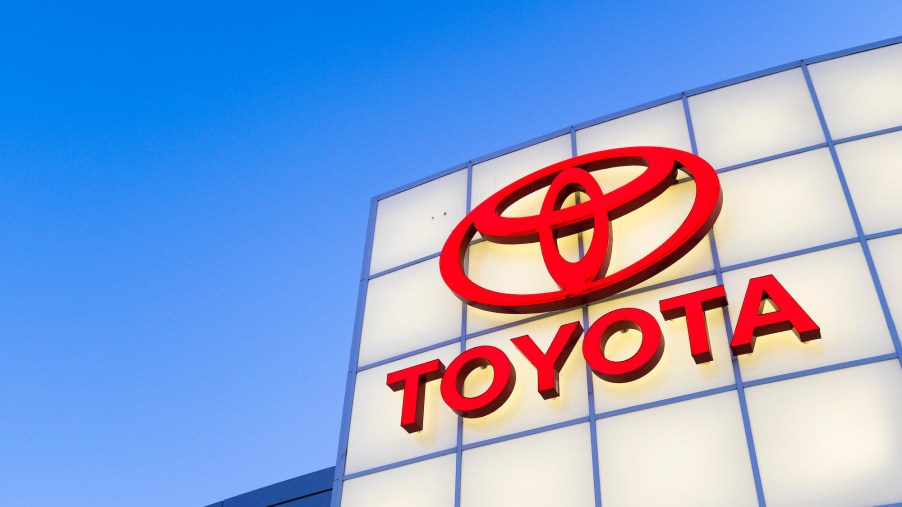
Toyota Is Following Through on Its Environmental Promises
Climate change has created new consumer, community, and government demands on the auto industry. Many car manufacturers have made public commitments to lessen their products’ and processes’ negative environmental impact. And while several automakers are making good on those commitments, Toyota has shown great strides in this arena. Its efforts are laudable for their scope and impact.
Toyota recently highlighted its achievement in a December 2020 press release.
Toyota’s environmental commitments
The automaker’s environmental efforts are anchored in the Toyota Environmental Challenge 2050, which the company announced on its website in October 2015. This challenge includes six bold goals. They include reducing its global carbon emissions to 90 percent of its 2010 levels and eliminating carbon emissions at global plants and throughout vehicles’ lifecycles by 2050. The challenge also includes goals to significantly reduce water usage, dramatically ramp up end-of-vehicle recycling, and deepen the automaker’s support of global conservation efforts.
Through these goals, Toyota hopes to be a leader in global efforts to address climate change and tackle other pressing environmental issues that threaten communities worldwide. For example, Toyota’s water management efforts are an extension of its commitment to help tackle water scarcity, affecting many regions of developed and developing nations. Other areas Toyota looks to address include resource depletion and habitat loss.
These environmental goals are not only designed to help reduce Toyota’s environmental impact (and consequently legal liability and regulatory costs) but also address changing consumer preferences. Millennials have shown a strong preference for environmentally conscious brands and products. And as they age and climate change becomes more pressing, that appetite will likely grow stronger.
Toyota’s EV development
Electric vehicles (EVs) and hydrogen-fueled EVs (AKA fuel cell electric vehicles, or FCEVs) promise zero direct carbon emissions. But many nations, including the U.S., have only developed a patchwork infrastructure necessary to support mass adoption, an Automotive World analysis shows. Automakers are betting big that the increasing demand for environmentally friendly vehicles will spur the private and public sectors to rapidly scale up that infrastructure.
But Toyota isn’t just waiting for it to happen. The automaker is proactively working with energy companies like Shell, FirstElement Fuels, and Air Liquide to develop the hydrogen fuel infrastructure required to support FCEVs. Toyota has also been working on various educational initiatives to prime consumers to purchase vehicles that run on alternative energy sources and support students whose research advances such vehicles’ development.
Last year saw Toyota release several new EVs, including the Mirai, RAV4 Prime Plug-In Hybrid, and Sienna Hybrid. These launches are part of the automaker’s plan to produce electric versions of every Toyota vehicle by 2025. It also has been issuing “Green Bonds” — unsecured debt securities whose proceeds help consumers finance Toyota EVs and hybrids.
The automaker’s carbon emission reduction progress
Toyota is also making significant progress toward its goal to reduce carbon emissions. It reduced its emissions by 9 percent between 2019 and 2020. And it reduced its emissions from North American operations by 14 percent between 2016 and 2020. The automaker achieved these reductions through renewable energy investments, productivity improvements, and energy efficiency enhancements.
Further, Toyota has been leveraging its supplier and distributor network to meet its goals. When a firm of Toyota’s size restructures its operations to reduce emissions, its ecosystem of dealers and vendors must adjust. That’s a fact the automaker is using to its advantage. It has taken other steps to help its dealers develop sustainable facilities, such as installing solar panels and making other energy-efficiency improvements.
It has also been working with its network to reduce emissions among the freight transport firms it uses. Freight transport, particularly trucks, has historically produced large amounts of greenhouse gases, the U.S. Environmental Protection Agency reports. Toyota has been incentivizing its logistics partners to reduce emissions and working with them to pilot energy-efficient technologies.
Other environmental accomplishments
Toyota has also been making strides toward addressing water scarcity in the areas in which it operates. It’s been reducing water consumption at its production plants and recycling up to 35 percent of the water it uses. The company is also developing water stewardship plans in regions with high water stress to further reduce water usage.
The automaker has also recently begun to use returnable shipping containers. Using these containers, Toyota avoided generating 10.5 million pounds of waste and emitting 130,000 metric tons of carbon emissions. Doing so also saved the company approximately $229 million in costs. It has also been recycling hybrid car batteries, having repaired and reused 140,000 since 2010. And Toyota was able to compost, reuse, or recycle 92.1 percent of all of its waste in 2019. That’s a tremendous quantity.
Finally, as part of Toyota’s conservation efforts, it has been working to preserve the monarch butterfly. The company discovered that the butterfly’s migration path includes several Toyota North American assembly plants. The company works with the Wildlife Habitat Council to identify other species in need of protection. And Toyota continues to fund conservation efforts and research, as well as scholarships for promising students interested in this field.
Toyota continues to make substantial progress toward its ambitious 2050 goals. In doing so, it continues to illustrate to its rivals how automakers can create high-quality, environmentally-friendly vehicles using sustainable production methods.


